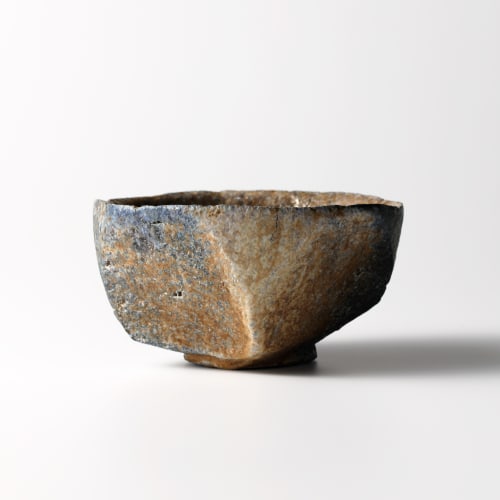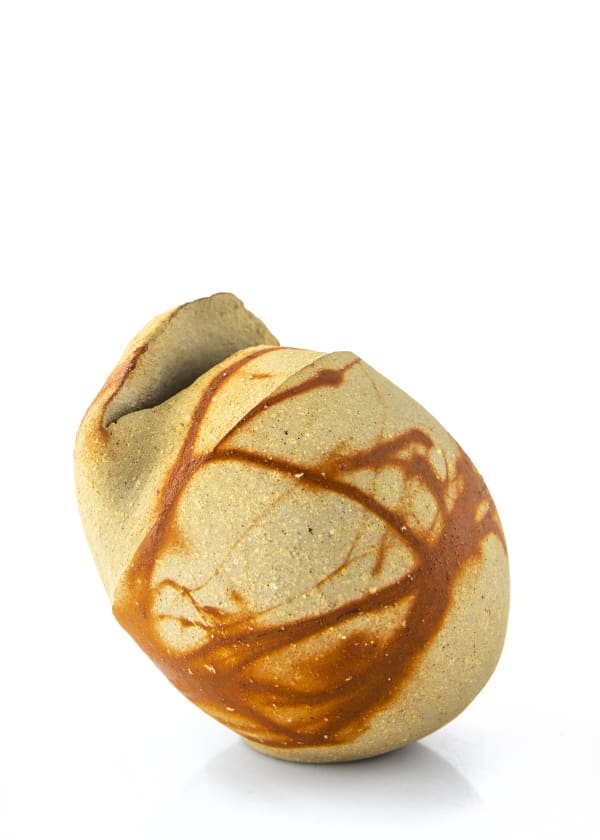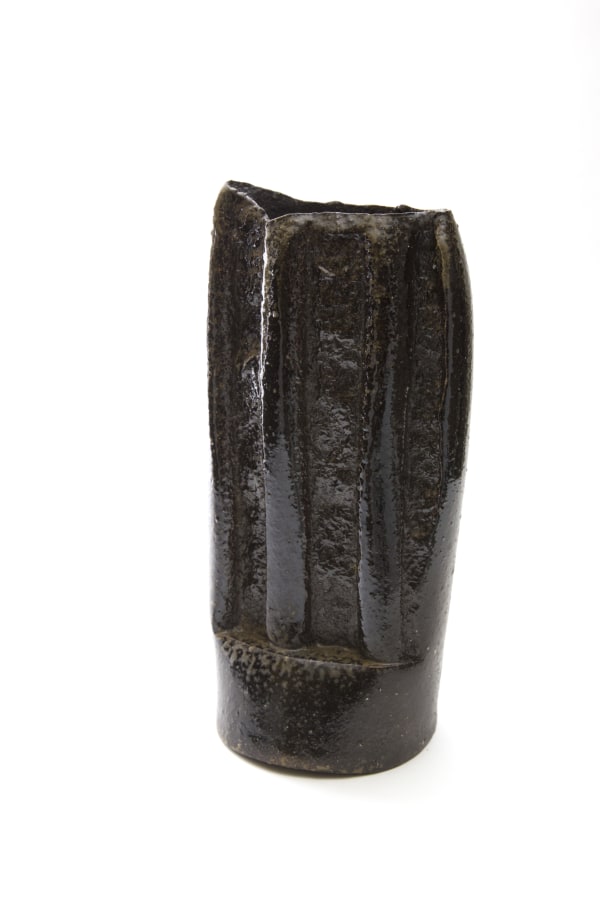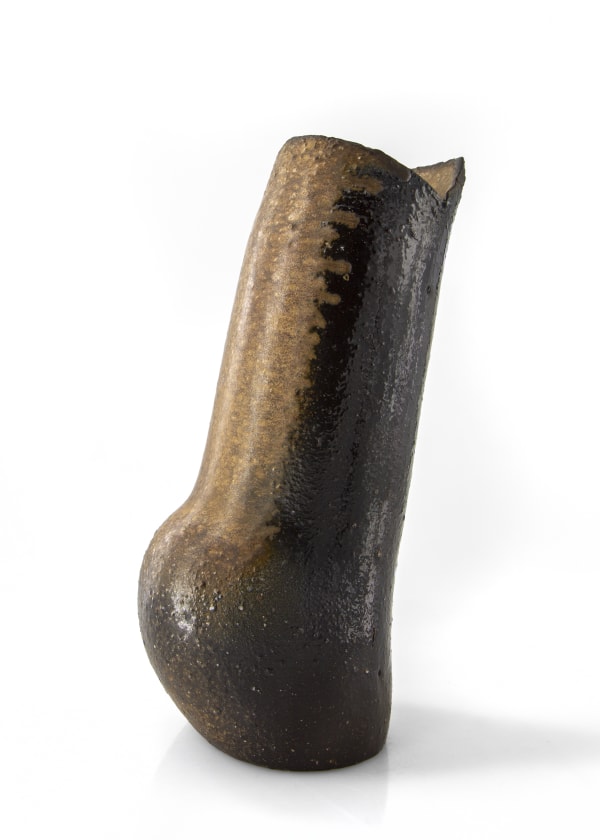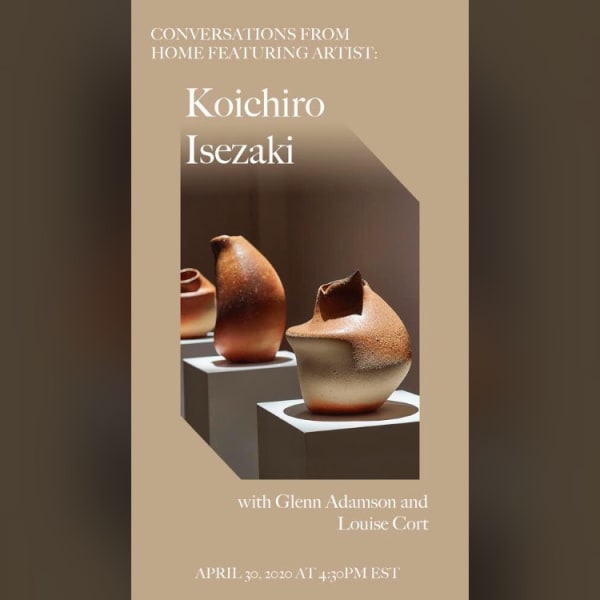Time seems to pass slowly in this small village. Set among the greenery of the surrounding mountains, passing along a road lined with walls made of pottery shards, we come to a large mound of raw clay that marks Isezaki’s studio.
Following in the footsteps of his grandfather, Yōzan, and his father, Jun (a living national treasure), Koichiro is the third generation Isezaki to become a potter, but during his student days, he studied wood sculpture. That was when he developed a feeling for becoming one with his material as he worked. After graduation he studied ceramics in the U.S.A. where he discovered a liberated approach towards pottery. Isezaki says that he stands ‘at the forefront of tradition,’ he spends time preparing clay using a variety of raw material. Through conversation with the material, Isezaki brings out their energy to use as the basis for his work.
Bizen ware, Japanese stoneware with a history of 800 years, is produced in Imbe, a small town situated at the foot of mountains in west Japan, Okayama Prefecture. Sticky and fine, the clay is dug out of rice paddies. Characteristically unglazed, the finish is determined by how the potter controls the fire. Particular favorite of the famous artist, restaurateur and potter, Kitaōji Rosanjin, said that it was Bizen Ware that displayed his food at its best, a collaboration with the ceramic form to create a sense of harmony.
Isezaki’s studio has two anagama kilns and the position of each piece in the kiln decides their final appearance. A single firing lasts between 8 to 10 days with the kiln being stocked continuously - requiring as much as 1,500 bundles of split pine. When the kiln reaches the desired temperature, it is said to ‘cry’.
Earth, water, wood and fire come together in harmony within the wildly dancing flames. The vessels, red hot and flashing, catch ash deposits from the firing process and create beautiful harmony. Out of the kiln, each vessel reflects a natural gloss and bear traces of the flow of flames, rhythm of ash, and scent of the clay.
‘ Breath of Clay ‘ will feature works from Koichiro Isezaki’s ‘Yō’ [Conception] series. The work contemplates the relationship between the interior and exterior, an idea conceived during his process of making teabowls. Looking at Isezaki’s works we cannot help but feel that the clay is alive, their ‘forms’ containing ‘hearts’. How will his works start to breathe in New York? This is something we can look forward to seeing.
Shoko Aono
Ippodo Gallery is proud to present Koichiro Isezaki’s first NYC solo exhibition, The Breath of Clay: The Life of Koichiro Isezaki’s Contemporary Bizen. The show will consist of vessels, tea bowls, and Isezaki’s latest ‘Yō’ [Conception] series.
Works in this exhibition depict a conversation about tradition and a challenge against history. Isezaki’s Bizen ware reflect the past and give hope for the future.
“I am not an artist that thinks about the definition of tradition while making [my art]. We are tradition, we are a part of it. It’s not in the past. We live and continue through it.”
- Koichiro Isezaki
Bizen ware is a stoneware produced in west Japan. Imbe, Bizen Province, has an 800-year history and is considered one of the Six Ancient Kilns. Bizen ware is composed of sticky, plastic, and fine clay thousands of years old, found in rice paddies. The clay body has a high iron content making the surface unreceptive to glaze. Thus, the Bizen tradition features an unglazed, natural finish. Koichiro followed in the footsteps of his Bizen master grandfather, Yōzan, and his father, Jun, who was a Living National Treasure. His more liberated approach to the material was developed through his studies in the United States where he discovered a feeling of unity and decided to renounce the concept of tradition.
Isezaki works closely with his materials from start to finish. As he makes the clay body from raw material, he the materials’ energy to use as the base of the work. In Bizen ware, the colors of the clay that surface depend on both oxygen and the type of firewood used. The less firewood, the more oxidizing the flame will be and, as the flames move upward in the Anagama kiln, the vessels turn a bright reddish brown. Because of their extreme plasticity, Bizen wares are fired slowly and over a long period of time. With careful consideration of material and composition, Isezaki creates a conversation between the interior and exterior of the finished piece and through technique and style, he brings life back into a an old time-honored tradition.
Koichiro Isezaki carries on his family’s generational practice of Bizen ware. He is the first son of Living National Treasure Isezaki Jun. Isezaki was the former apprentice of New York-based ceramic artist Jeff Shapiro, who studied under Koichiro’s father’s apprentice, Yamashita Jyoji. Straying away from tradition to create something new, his works represents organized chaos and organic form
